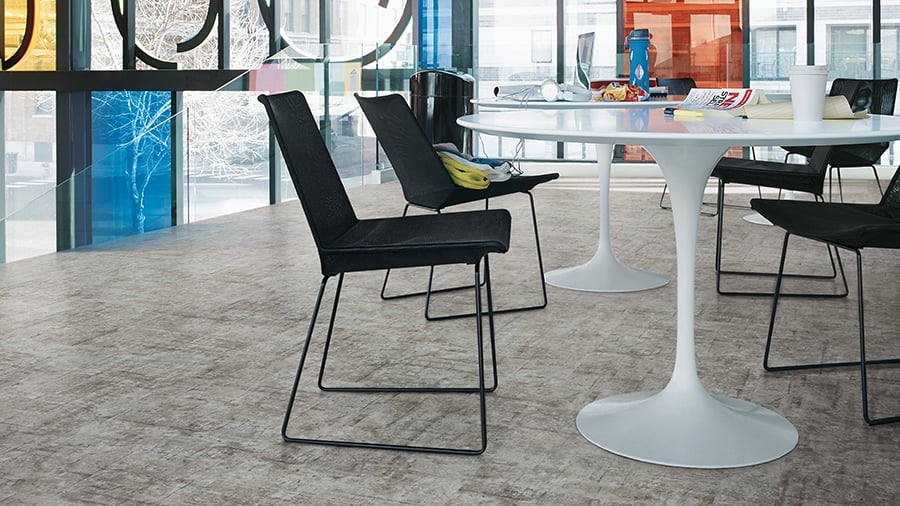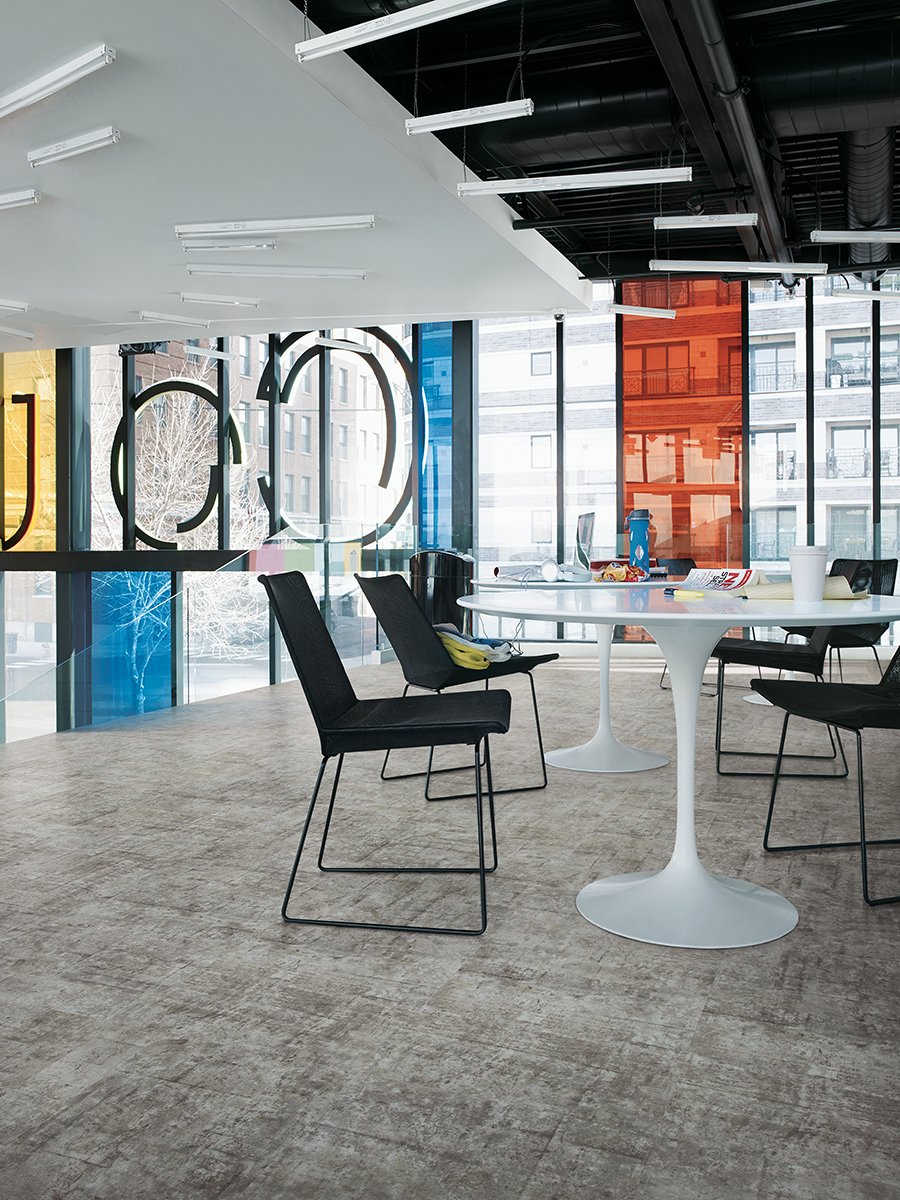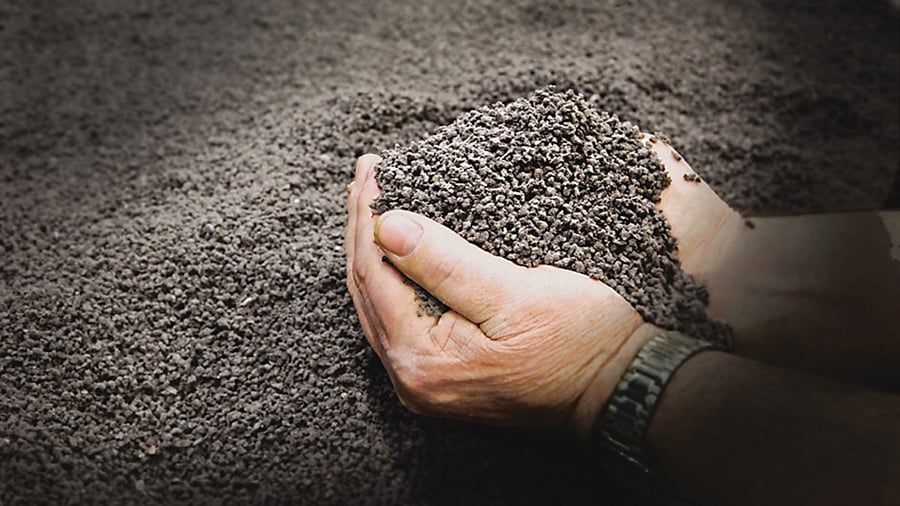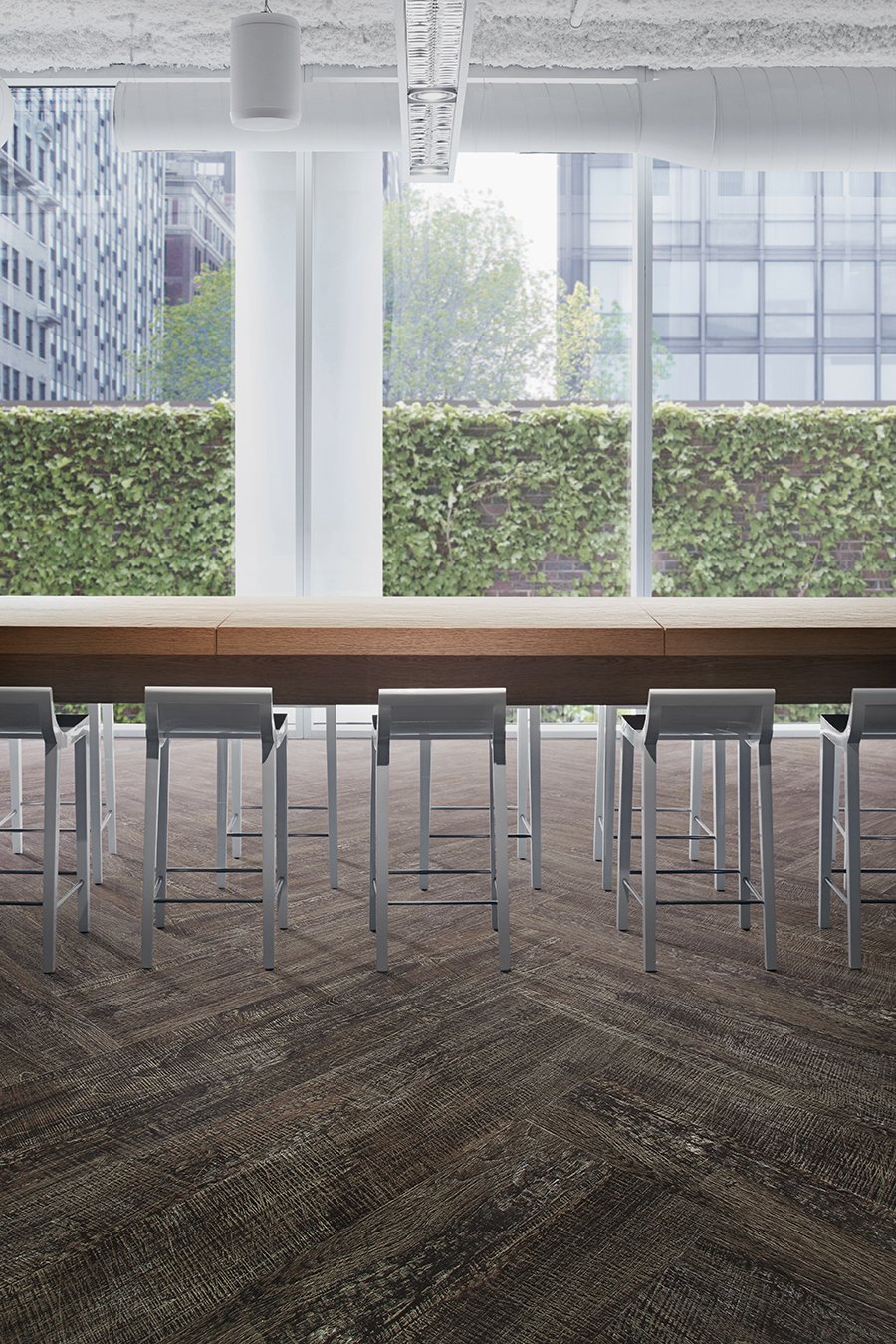
June 21, 2017
Can Vinyl Really Be Sustainable? One Manufacturer Bets on Yes
One carpet company is expanding its product line to include vinyl tiling—and still promising to have 100% of its materials recycled or bio-based by 2020.

The recent announcement of an LVT (Luxury Vinyl Tile) coming from Interface, the carpet company that, under the legendary Ray Anderson made huge strides into sustainable manufacturing and distribution, puzzled us. So we went to the source, the company’s chief sustainability officer, Erin Meezan, to find out how this seeming turn-about occurred.
Metropolis: In layman’s terms, what makes LVT recyclable?
Erin Meezan: LVT is largely made of vinyl, which is highly recyclable and easy to re-incorporate into new products. Vinyl compounds are highly flexible in their ability to be recycled into other things and can be used in a variety of applications. These vinyl materials are more able to go through multiple generations of recycling. There are LVT products that contain recycled content; however, we chose not to go this route because we wanted to be certain all ingredients in the products we recycle can be fully identified. When recycled content products are sourced from a third party and not manufactured by us, there is a risk of unknown contaminants, and we are not comfortable with that risk.
This thinking is reinforced by our 15-year history with recycling vinyl carpet tile backing. As we’ve sought to recycle old products, including competitors’ products and other sources, we found a huge variety of ingredients in the vinyl, including potential materials of concern. Old PVC products can contain materials such as heavy metals or hazardous plasticizers.
M: So, why LVT?
EM: We’ve been talking about LVT for a long time because we know customers want to work with a manufacturer who offers both soft and hard flooring. So we asked ourselves, if a company like Interface made LVT, what would that look like? Do we have the ambition to do to LVT what we did to carpet tile? We know that we need to be accountable for what we produce. So if we make LVT, we need to make sure to improve it, year after year. The Interface way is to find something that can be recycled in our systems. In addition, we need to be transparent. So we had to require whoever works with us to follow HPD (health product declaration) protocols. We ended up working with a Korean manufacturer.
We made the business commitment that by 2020 100% of our materials will be recycled or bio-based. Now that we’re bringing LVT into our portfolio, it needs to comply with our Mission Zero commitment—a huge challenge. We’re starting with 100% virgin material to make sure that it can be recycled safely into our system.
M: You have three years until 2020. Can you make it?
EM: We are exploring recycled vinyl sources, which are increasingly becoming cleaner, for carpet tile backing. We want to do this because the products we’re selling today will be on the floor past our 2020 commitment. That means we’ll have to find other supply chains that will provide that recycled piece of it. In fact, we may find a bio alternative to LVT and completely move away from a product that has a PVC back.

M: So you’re not giving up on bio-based?
EM: We have not found a bio-based alternative to LVT that has met our needs and specifications, but we’re certainly looking. There are 100% bio flooring options (non LVT), some combinations of LVT with some recycled or bio-based content, and we’re looking at all of those as options in the next version of our LVT products. We’re not writing anything off. We’re looking at the potential of a sustainable alternative. It’s a huge opportunity.
M: Knowing that floorcoverings will look shabby with use and time, why is there not more effort placed on developing a recycling system during the product design and development phase? Why not make products to last for, say, three years and then picked up to be recycled?

EM: That’s a really good point. I think our biggest weakness is that we haven’t done as well as we need to in bringing products back. To your point, we start thinking about recycling at the end of the transaction. What we need to be thinking about is the beginning.
The good news is we are investing a lot in data quality. We’ve launched a global CRM (Customer Relationship Manager) project last year. Knowing exactly where our products are and their age will provide much better data and targeting capabilities to have a more strategic approach to product take-back. We also launched a couple of pilot projects globally, asking, when do we intervene with customers to get the used product back?
We’ve tried a lease program, which was a really great idea, but terribly unsuccessful. People didn’t want to take us up on the idea of leasing carpet tile. The most appealing solution might be a discount given up front to the customer. Yes, we want the used carpet back. But we also realize that, in the past, we limited the value proposition by only thinking about this as landfill avoidance. We can’t continue to do that.
M: Developers know that their young customers are concerned about their own health as well as the environment. They build massive mixed-use, urban projects that require miles of flooring. But we don’t hear them talking about instituting recycling programs.
EM: Not many states mandate that used floorcoverings can’t go into the landfill. Our industry has not been progressive about doing this voluntarily. But the State of California, a few years ago, passed a law mandating a recycling program, and they’ve been very critical of the carpet industry. They’re coming after the carpet industry with huge fines for non-compliance. This policy could kickstart reclamation programs elsewhere. It certainly holds the industry accountable.
M: Now might be the time for the CRI (Carpet and Rug Institute) to develop a software program for every manufacturer to use and to document where their product is, and when, now that we’re documenting everything.
EM: That’s interesting. There are also a lot of possibilities for monitoring. Embedded chips, for instance. […]
What makes me hopeful is that lots of design firms and clients have started to ask the right questions around what’s in the products, and they’ve tied that to shelf space in their libraries and what gets purchased. Any step toward asking questions of manufacturers, requiring disclosure, and making decisions to purchase based on those disclosures is a huge step forward.
If you liked this article, you may also enjoy learning about how textile company Momentum has gone PVC-free.






